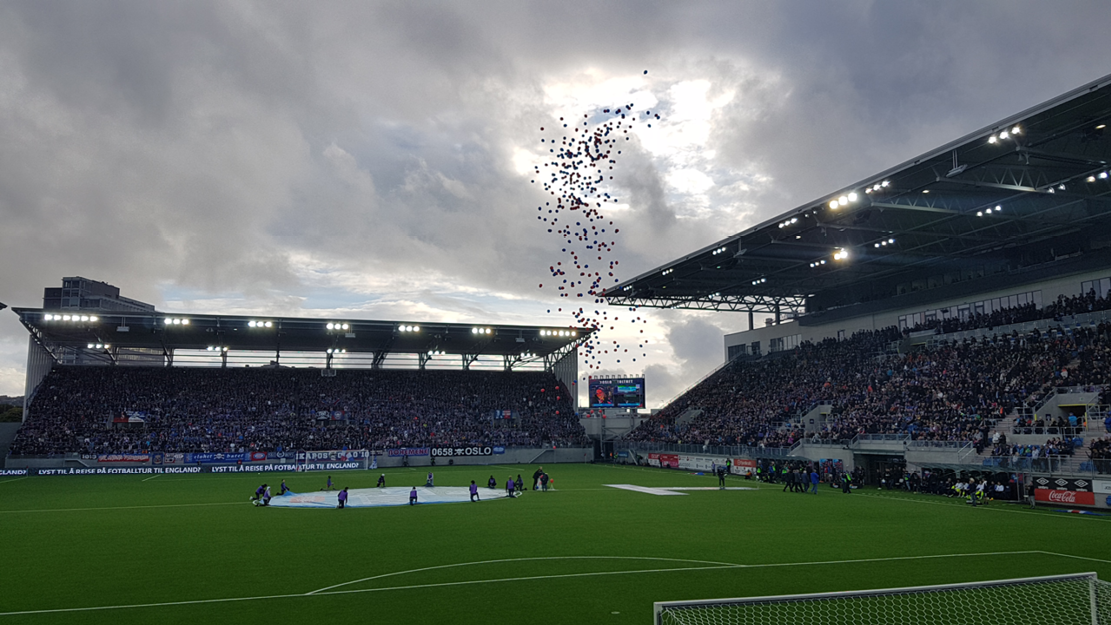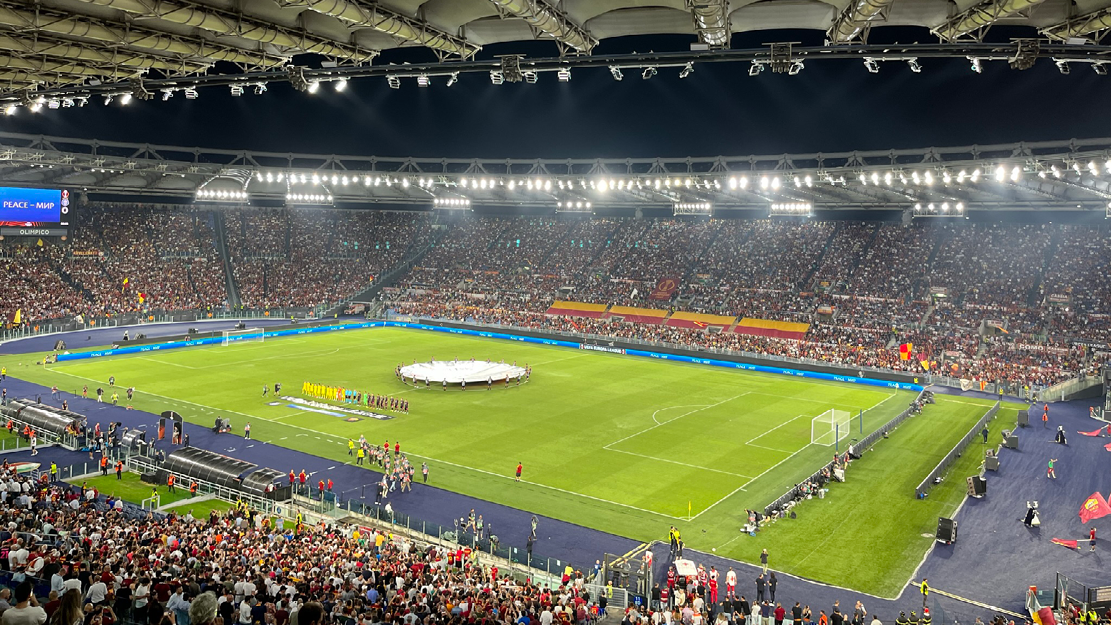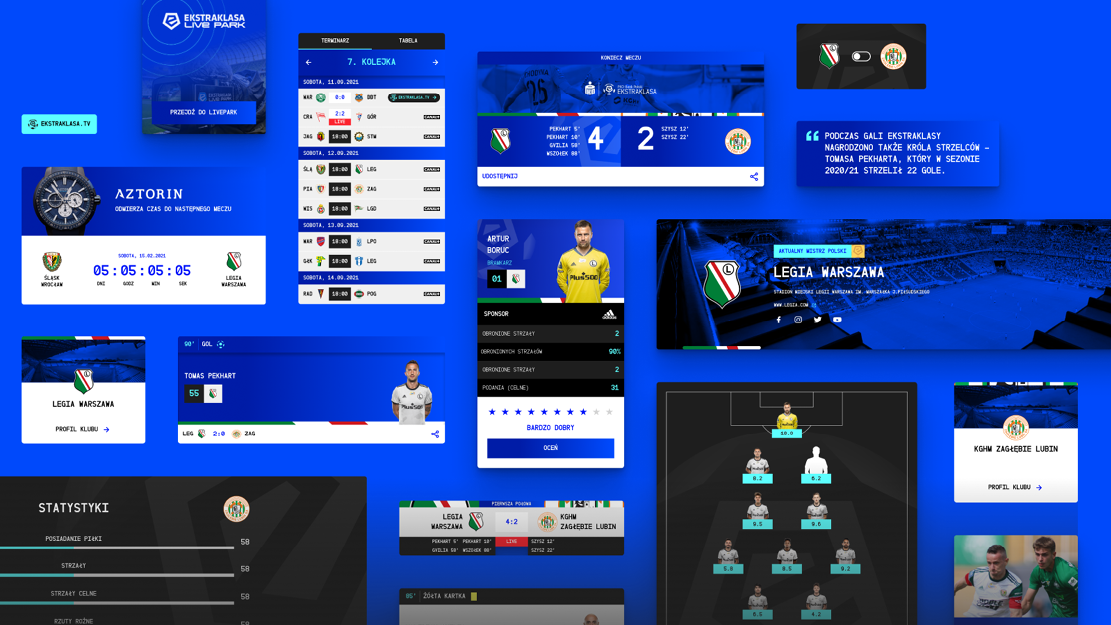The Norwegian League shares know-how, insights and tools with its 32 clubs. For Thomas Torjusen this is the way to develop the Norwegian professional football. Torjusen, who worked at the club Fredrikstad before he joined the league where he is now Head of Media and Chief Digital Officer, speaks about the idea and the advantages to implement joint systems.
The Norwegian football league is a leader when it comes to centralized offers for their clubs. Why did you choose to offer that?
Thomas Torjusen: Norway is a small country with just below 5 million inhabitants. For our 32 clubs it is difficult to do a lot of long-term development when it comes to digitalization. This is down to available personnel and the cost of doing this one-by-one club would simply be too much for almost all of our 32 clubs. Thus, we have made a lot of joint systems which ensures stability, reasonable cost for the clubs and development and integrations done one place – being used by all clubs.
How did the clubs react back then and how satisfied are they now?
The league started first time in 2008 with joint systems and first out was a CRM-system. However, that was not the right time and the clubs were not ready for it yet and needed more insights and information about the surpluses of joint systems. In 2012 the first joint system was launched after a long process where all the clubs were included. This was the mediaplatform (all clubs webpages, video solution and joint ad manager system). Clubs were quite satisfied with this and in 2013 the joint CRM-system was launched.
It has been an interesting journey, but we feel that it is natural for the clubs now to think joint systems now for the parts they cannot manage for themselves. It is also very clear in our digital strategy – which is approved by the clubs.
You mentioned that you don’t close the system for the first and second tier you are responsible for. Clubs that got relegated to tier 3 are also using some of the centralized systems…
Since we only work with the two top divisions in Norway, we know that every year we have some clubs that relegate and thus no longer are part of our leagues. Normally they tend to be promoted after few years, but some stay down.
Since our joint systems are paid by the league it is then our member clubs that bear our cost. Since we know that a lot of the clubs promote after some seasons, we have made a system that for the first relegated year the league cover the costs. Second year they have to pay 50% of the direct costs and the third year they must pay 100% of the direct cost. This is a very fair system, and we have 3 clubs that pay 100% of direct costs already. This shows that they like the systems they get, and it is better for them to stay on.
What services do you offer to your clubs right now?
This is quite a lot:
Mediaplatform: Webpages, integrations towards video archive for automatic publishing of highlight-packages after hold back rules, integration with stats and connection towards our FRM system. The solution also includes an ad system for control of both display and video ads.
We have developed a unique design system which enables each club to stand out with their own colours and patterns and the clubs have a lot of relevant parts they can put into their pages that work automatically based on metadata. An example of that is the match module most clubs put on the top of their webpages. This has three stages. The first one is “before match” and shows countdown, buy ticket link, match sponsor and relevant TV channels as well as the table. The second one is “during the match” and is automatically switched on as soon as the games kick-off. Here you will see all live events as well as a live table. The third is “after the match” and this starts as soon as the match ends. Then we see the result, updated table as well as a buy ticket and promo for the next match.
FRM system: This is the B2C part of the CRM system. Her we have included all relevant sources of customer data and it is feed with ticketing data, newsletter signup, WiFi-signup, fantasy usage and social campaigns on Facebook through Crowdmanager.
The system has a newsletter option as well as the possibility to do surveys.
CRM system: This is the B2B part of the CRM and used by the marketing departments of the clubs. Here we have the possibility to put all company contacts, prospects, contracts, sold inventory, follow up and syncing of mail and calendar to Outlook. We also have a digital signature option that the clubs can use.
Connected League system: This is based upon Cisco’s Connected Stadion system, but that would be too costly for our clubs to install one by one. Therefore, we have created a joint data centre where they can share resources thus making it more cost efficient. The clubs that have the full solution get a connected stadion with WiFi-onboarding that is connected into the FRM-system and an app. This app provides near to live clips within the venue through an OTT-system we have created for this purpose.
Within the Connected League system there is also the possibility to manage content to Giant Screens as well as LED boards.
OTT system: We are extremely proud of this system. There were no systems like this on the market. By that I mean an OTT system that is linked directly to the live broadcast signal and could make near to live clips to the app for those connected to the WiFi. Traditionally systems have a delay for around 1,5 minutes after the event and has a lot of double processing and movement of files. Our system works directly with the livestream and uses the live metadata from the tagging operation and with real time synchronisation system that delivers the clips in the app after about 5 seconds.
The system can be found openly here with all events back to 2017.
The clubs can easily reuse this on the mediaplattform – this enables them to add video content of a goal for instance and it takes them around 20 seconds to add it to the article – and then the video plays inline.
Eliteserien Fantasy: this is a fantasy game which has the same background system as the Premiere League Fantasy. Users choose their team in Eliteserien or OBOS-ligaen to follow – and then gets feeds in the game with last news from that club as well as they can opt in for info from the club – which again is directly inserted to the FRM-system.
Joint ticketing system: Earlier it has been up to the club to find their own ticketing vendor. This making it around 7 suppliers in Norway to our clubs.
The commercial deals for each club were not optimal as well as they had little impact on the roadmap. In the end of 2019, we landed a deal with TicketCo and we now have 28 out of 32 clubs on this solution.
Sports and analysis system: We have a deal with HUDL for a league portal which gives event and tracking data of each match. This year the League install cameras on all venues that are used within this system in order to give the sporting departments of the club better tools to work with player development as well as match analysis.
You are working on additional services, right?
Yes, we are always looking for improvements and new relevant services. Our focus now will be to get a Single Sign On (SSO) in place. We are also looking at the possibility to change the apps from native apps to Progressive Web Apps (PWA) which are more connected to the mediaplatform. On the ticketing system we are finalizing a subscription model for seasonal tickets – to mention some.
One very exciting project is the insight platform, a dashboard for your clubs to keep an eye on the most important information and data. And the tool will also recommend tasks based on a lot of existing data and AI. Can you tell us a bit more about that?
Our aim is to give meaningful insight to our clubs for them to take better decisions. There is a lot of different systems within our architecture and you can find some insights inside each and one of them. What we want to do with the insight platform is to gather all relevant insights in one dashboard for each club. There they will get the relevant KPIs as well as actionable insights and suggestion based on engagement on all social platforms, mediaplattform, number of fans in the fanbase, historical match and spectator data as well as weather info. The main focus is to help the clubs sell more tickets to their events.
That could be a real gamechanger…
Yes – we would like to think so. The key is to gather all the available big data and present it in a simple and understandable matter for our clubs – as well as we from the league can see this on a league level. The clubs can also see how they perform in different KPIs and how high they rank among the 16 measured clubs in each league.
Most clubs in Norway could not implement most of these services on their own, due to the lack of financial and manpower. How big are the professional clubs in Norway? How many people are working in the non-sports sector and what’s the average revenue of a first-tier club?
Eliteserien clubs together has a revenue at around 140 million Euro. This makes an average 8,75 million Euro. The largest club is about 27 million Euro and the smallest club is at 2,6 million Euro.
The non-sport sector in the clubs vary a lot from very few (4 to 5 people and up to 20 people).
At the moment some services are mandatory for your clubs, opting-out is not possible. Some others are non-mandatory. Can you tell us a bit more about these different levels?
Mandatory: Mediaplatform, FRM, Ticketing and OTT
Non-Mandatory: CRM (B2B-part), Merchandise and kiosk solution of the ticketing system, Wifi-onboarding and app, digital signage, Partner page, Financial system and Crowdmanager
You also re-developed your brand. When did you do that, why did you do that, and did you reach the goals you had?
In 2017 we launched a new league identity for our top tier. It had been called Tippeligaen and had been connected to our national betting partner – Norsk Tipping – from 1990. We wanted to own our own brand and the new name of the league was Eliteserien. The brand shall safeguard the Eliteserien’ s heritage and history, and at the same time be innovative and future-oriented. We are proud of the new profile and we are happy to share it with the clubs, fans and all our partners. It has been a great journey and we feel that our goals have been met.
You offer centralized tools and services, what about the marketing and TV rights?
We sell this centralized through a company called Fotball Media – which is owned 50% of the League and 50% of the Federation.
Recently we sold all our media rights to TV 2 from 2023 at a historical commercial level at 450 Million Euro.
What are the advantages of that centralization?
They are quite obvious: Cost, control on roadmap, development of new features and functionalities, connected architecture and control of the customer and the content.
Do you think this kind of service for the clubs is something more leagues should offer? Or is it only useful in certain circumstances?
I think this is the way to go. We work close with Sweden and they use a lot of the same setup as we have.
I think there should be the possibility to do joint solutions on bigger leagues as well and on UEFA, FIFA and European League level too for relevant solutions.
In general, how did the Norwegian league develop over the last, let’s say ten years?
If we look away from 2020 which is a special year due to the Covid-19-Pandemic we have had a small drop in spectators but the financial revenues for the clubs have gotten better.
We have been focusing on player development and it is nice to see Norwegian players doing well at larger European clubs. We hope for our national team to qualify for the large championships soon. Our younger national teams are doing very well which gives us a positive future.
And how do you think will the future of the league look like?
Since I am a huge Star War fan, I must quote Yoda here: Difficult to see. Always in motion is the future.
But hopefully we aid our teams to create even better players and our teams do well in the European competitions.
There will be a lot of focus on data and metadata in the coming years and AI will do a lot of the tagging and tracking data. I guess the league will be the premium and commercial most interesting sport in Norway to watch and follow as well as be connected to.
We will still share among the clubs and I think the idea of sharing – both when it comes to systems as well as knowledge will give us an advantage.






